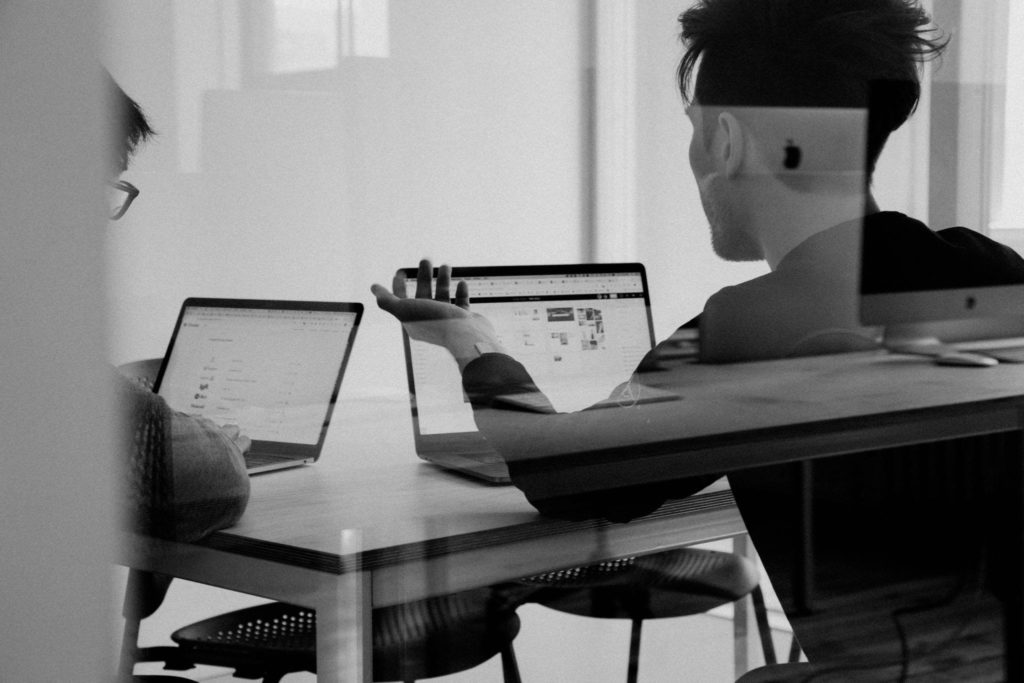Article
Synthesize Convention and Innovation

Secure vs. Insecure
In the world of design, there are seamless experiences in which transitioning from one task to the next happens organically. Giving users control of the experience requires striking a precarious balance between adhering to rigorously tested conventions while also innovating to satisfy a user’s needs.
UI and UX theory is centered around how to create an experience that allows users to accomplish their goals with ease and efficiency. But it’s crucial to include some serious creative expression in your experience that simultaneously feels natural: “[A] best practice is to start with a wireframe that omits all design aesthetic (often UX) to make room for focusing on layout first (often UI). Once the ideal layout is established, there is plenty of opportunity to get creative where creativity will be appreciated.” (see more about why it’s important to wireframe simply, without color, imagery, or style)
In a Nielsen-Norman Group article, the Top 10 Mistakes in Web Design, Jakob Nielsen argues that “The more users’ expectations prove right, the more they will feel in control of the system and the more they will like it. And the more the system breaks users’ expectations, the more they will feel insecure.”
Regardless of the type of website or application, all are created with some type of conversion in mind. When a user’s expectations about quality, efficiency, and predictability are betrayed, they can easily bounce.
Jakob Nielsen speaks to this in the same article, humorously quoting himself:
“Jakob’s Law of the Web User Experience states that ‘users spend most of their time on other websites.’ This means that they form their expectations for your site based on what’s commonly done on most other sites. If you deviate, your site will be harder to use and users will leave.”
If users form their expectations of what an experience will feel like based on other websites, navigate to yours, and then find that it doesn’t adhere to the same conventions they are used to, it stands to reason that they would navigate back to websites that reside in more familiar and tested waters. Creating a sense of security is a prime consideration, but it must be balanced against creative innovation.
Tapping into Intuition
Computers and software are tools. They were created to allow us to solve problems in an innovative, organized, and methodical fashion. Just like a hammer is used to pound a nail, we’ve come to understand that computers (and the myriad things they allow us to do) can be used and will behave, in response to our input, in certain predictable ways. This is because of established design patterns.
Dmitry Fadeyv speaks to the value of internalization in his article Watching Them Struggle:
“Having used a computer for a very long time, all the processes involved in operating it have been internalized, have been learned and transferred into the subconscious mind. Presented with a new device or a new user interface, that experience is tapped into intuitively, which allows that person to make sense of the new interface almost instantly, without conscious thought.”
Steve Krug explores the concept of usability extensively in his seminal book, Don’t Make Me Think. He explores the phenomenon that Fadeyv pinpoints – the fact that digital experiences should be intuitive, that our ability to make sense of a digital product should happen in a split second, and that the experience as a whole should require a minimal amount of thought and effort from users. If any of these considerations are compromised, the experience of using a given product becomes cumbersome. Split seconds turn into monotonous minutes, and users look to other options to satisfy their goals.
Key Conventions
Convention is defined as “a way in which something is usually done, especially within a particular area or activity.” When we approach a digital experience, we have expectations, conscious or subconscious, of the way that the process should unfold.
Conventions are important to follow because, if they are consistently implemented, they’ve been tested extensively (see our article on the importance of usability testing). Jakob Nielsen touches on this in an interview from 2014:
“[Let’s] talk about icon design. Do people recognize that a magnifying glass is an icon representing search? Well, it’s a little bit of a stretch, not a big stretch, but it’s a little bit of stretch. Maybe the first time anybody drew a magnifying glass icon, people wouldn’t have necessarily gotten that point, but today it’s very commonly used, so therefore today, we know from user testing, today it’s understood [ . . . ] Sticking with conventions is really important because once people learn something, you are leveraging millions of hours of human time of learning something.”
Innovation is an essential component of design, but should be reserved for certain situations and in certain contexts. Unless a hypothesis about how a convention could be changed for the better has been tested extensively, it’s impossible to verify as being true. Design patterns exist for a reason – they’ve been developed, tested, and iterated upon to the point that users can intuit their usefulness and application.
Fresh, but Calculated
At Fresh, we value innovation, and we want to balance creative expression with convention. We know where to get creative, and there are plenty of places to do so. We don’t believe that design patterns will remain static. If you have a new design idea that replaces a convention and can prove that it works better, then you have a clear rationale for creating a new design pattern. And we know that there are design patterns purposefully and justifiably overruled in the interest of allowing for innovative creative expression to meet a certain objective. We recognize, however, based on experience with design patterns, that there are areas of design where drastic innovation might be counterintuitive to most users, and consequently ill perceived.
Our goal is to make certain that you find the sweet spot – lying at the intersection of your business goals, technology, and design – that will allow the experience you’ve designed to work.
Design patterns develop when a convention becomes mainstream. But design patterns constantly change. Understanding what those trends are and what patterns are effective when deployed with certain types of new devices or new technologies is important.
Google’s goal in creating Material design was to “Create a visual language that synthesizes classic principles of good design with the innovation and possibility of technology and science [ . . . ] [to] develop a single underlying system that allows for a unified experience across platforms and device sizes.”
Material design is Google’s assertion that they have a new and improved design pattern for today’s interfaces that should be considered. But as they state, it’s a “[synthesis of] classic principles of good design with the innovation and possibility of technology and science.” If you can test and validate that a new design adds new value when contrasted against an existing design pattern, then you have grounds for pushing forward with an innovative solution.
The key is learning to innovate in the right way, and we believe that this comes back to following a scientific design process that works; one that allows designers, developers, and businesses to adhere to established conventions and pioneer in places that will add value to the product they are creating.









